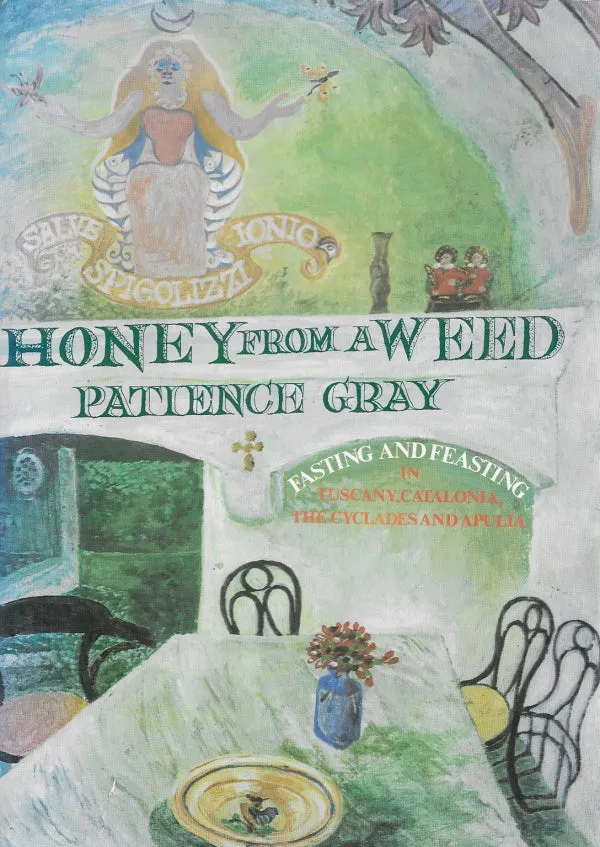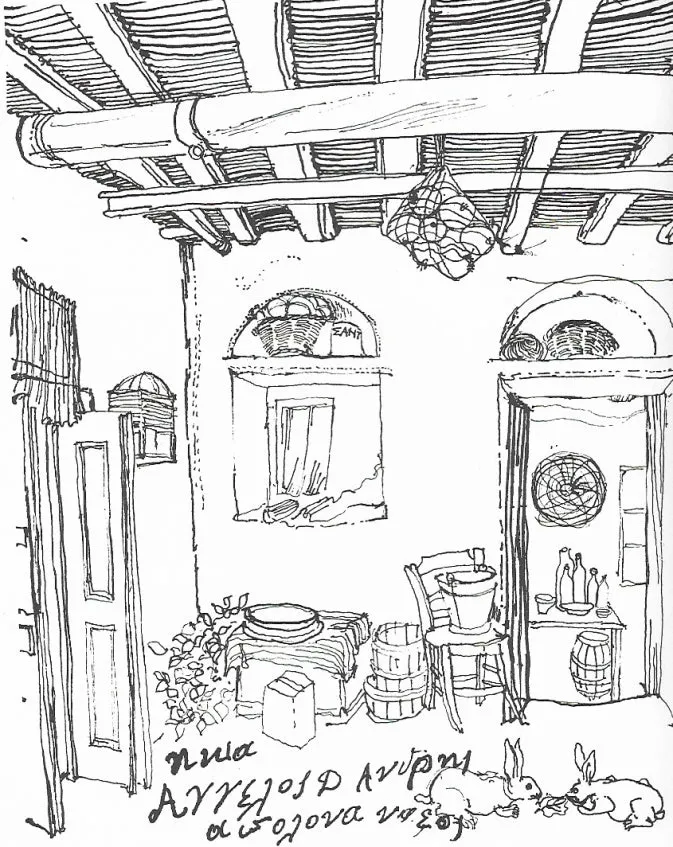Prospect Books, 1986. Hardcover. Very Good in Very Good jacket. First printing.
One of the less widely known figures in the world of food, Patience Gray (1917–2005) was, at the same time, among the most influential. She lived and wrote about simplicity, locality, and the rewards of a subsistence lifestyle long before those ideas had become part of the vernacular.
Although few could personally apply her very particular way of going about it, she served as a beacon for many of her contemporaries, such as Alan Davidson, Jane Grigson, and Richard Olney, as well as food ethnographer Paula Wolfert, explorer of basic cooking John Thorne, traveler and tireless writer Ed Behr, and even scientist Harold McGee. The often isolated farms and villages all around the Mediterranean where she alighted became pilgrimage destinations for those who knew of her.
English-born, Gray began her working life writing for magazines and serving for a time as the women’s page editor of the prestigious Observer. In 1957, she co-authored an immensely successful cookbook called Plats du Jour. Shortly after this, she met sculptor Norman Mommens who would be her partner for the rest of her life.
With Mommens constantly in search of good stone, he and Gray began an odyssey documented in her second book, Honey from a Weed (1986). Here she tells how she and Mommens—never here named and referred to only as “The Sculptor''—formed a deep connection to the land and people wherever they were. “A vein of marble,” Gray writes, “runs through this book.”
Honey from a Weed, an immensely satisfying read, is also complex. It could be called a cookbook, although it is also very much a memoir, a near-ethnographic assemblage of material on rural folklore and tradition, an historical work, a botanical guide, and a treatise on a dying way of life that Gray acutely felt had to be preserved. It is, to some degree, a strongly felt counter-cultural plea. The writing is elegant—personal, authoritative, and sometimes poetic—but happily, not over-polished.
Rustic and hearty recipes, hyperlocal and fresh, are seamlessly woven into the text, and they tend to involve making good food from what can be found in nearby lands and waters or what others produce locally. That means in many cases finding a way to turn sometimes tasteless roots, tough vines, and bitter leaves into food that will nourish and satisfy. And it was, for Gray and Mommens, not always easy. They generally lacked running water, electricity, and gas and so had to revert to traditional methods of cooking and preservation, learning from the local populations with whom they dined and celebrated in both times of plenty and times of scarcity. No ingredient goes unappreciated, and the chapters on “edible weeds” and mushrooms would not be out of place in horticultural and foraging publications.
The book was published jointly in the UK by Alan Davidson’s Prospect Books and in the US by Harper & Row. Our copy is a stated first printing with a Very Good book block and case—save for about 3 pages of back material that have been dogeared—and a Very Good dust jacket with a light-faded spine and a one inch closed tear to the front. We will always offer the hardcover when we have one, as we believe it belongs on everyone’s shelf. Also available in.















